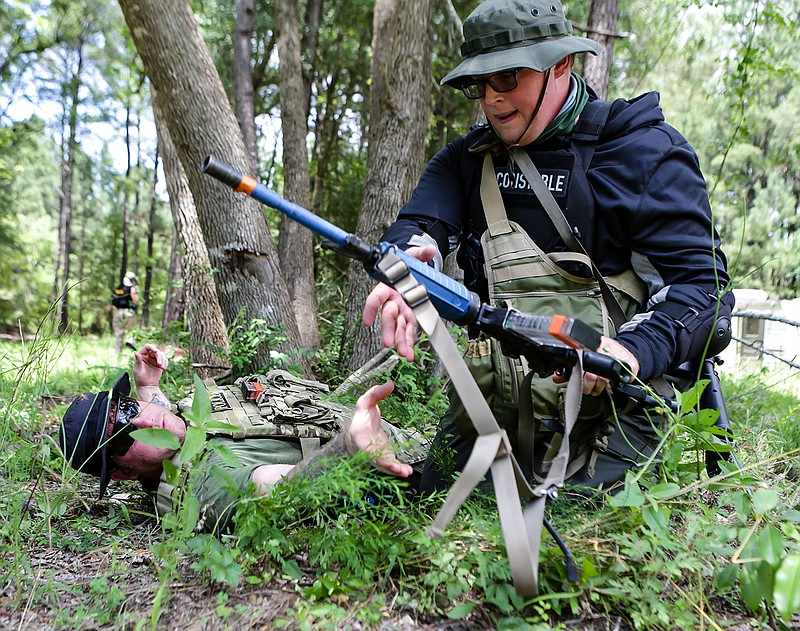Shots rang out in a heavily wooded area off of South State Line Avenue earlier this week. Police officers in heavy gear moved through the trees in perfect coordination, on alert for the possible suspect.
Photo Gallery
Shindig at The Station
The Station Grocery and Deli opened its doors for a Fall Shindig as part of the 1st Thursdays in Hillcrest. The party included live music by Mandy McBryde and an apple pie baking contest.
It looked and sounded real, but was actually part of the Advanced Law Enforcement Rapid Response Training (ALERRT) program aimed at getting officers from across the country on the same page when it comes to active shooter response situations.
"This session is called exterior response to active shooter events. It's learning the basic principles to save lives in an active shooter situation," Texarkana, Ark., Police said Sgt.Rick Cockrell.
The training was held Monday, Tuesday and Wednesday at the TAPD training facility south of Texarkana.
After officers complete the training and learn from it, it won't matter where they are from, Cockrell said. They will be able to coordinate together easily with the skills they have learned.
The ALERRT Center at Texas State University was created in 2002 as a partnership between Texas State University, the San Marcos, Texas Police Department and the Hays County, Texas Sheriff's Office to address the need for active shooter response training for first responders. In 2013, ALERRT at Texas State was named the National Standard in Active Shooter Response Training by the FBI.
Utilizing the train-the-trainer model, the ALERRT curriculum has been adopted by numerous states and agencies as their standard active shooter training.
Cockrell has trained in San Marcos and is now an adjunct instructor himself.
The focus of this week's training was on equipment selection, vehicle ambushes, medical emergencies, citizen down rescue and emergency vehicle crisis response.
Officers also work on verbal and non-verbal communication.
"You always have the tactical advantage with non-verbal," Cockrell said.
About 30 officers attended along with six adjunct instructors. Law enforcement officers from all over Arkansas and Texas attended.
"This program brings officers from all over," Cockrell said.
The training is held on 22 acres of land with both buildings and wooded areas on it.
"It gives it a sense of realism. You don't know where the suspect will pop out from," said one of
the officers.
TAPD plans to hold another exterior response to active shooter training session in July. In August, the department will hold training in civilian response and casualty care.
Officers from a number of other states have already signed up for the August session, Cockrell said.
The officers hope the training is something they will never have to put to use. But they also know they need to be prepared.
"You always have to be prepared for the worst case," Cockrell said. "It's easy to get into a 'It's not going to happen here mentality,'" he said.


